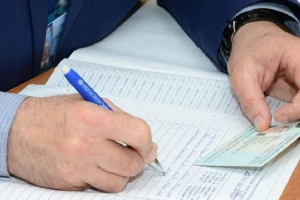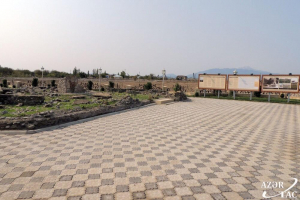


A huge collection of Jewish manuscripts, created over thousands of years in Jewish communities around the world, has become available to Internet users.
Rarities are collected on the new website "Ktiv", opened on the initiative of the National Library of Israel.
According to Dr. Aviad Stolman, the head of the collection department of the National Library, the new site is a kind of Google of the Jewish people. If in the world, according to the estimates of Israeli specialists, there are currently about 100,000 Jewish manuscripts, then more than 90% of them are placed on "Ktiv".
After digitization, the documents were transformed into almost 15 million images of the highest quality. It is enough to click on the image, and it grows to a natural size (though, it is recommended to view it on a large computer screen).
The Chairman of the Board of Directors of the National Library, David Bloomberg, stresses that when creating the "Ktiv" collection, the National Library collaborated with the Association of Jewish Manuscripts (FJMS) Alberta and Nancy Friedberg, and also with the "Qiyuney Hare-Dyeh" project under the Ministry for Jerusalem Affairs and Jewish heritage.
"Jewish manuscripts that reflect the knowledge and culture of the Jewish people" wandered "through countries and continents, until eventually they settled in the repositories of large libraries or in the safes of private collectors," Bloomberg said. "Nowadays, these manuscripts are a unique source of information about the spiritual and material culture of Jewish communities around the world."
The opening of the site "Ktiv" is timed to the beginning of the World Congress of Jewish Studies in Jerusalem. Access to the meeting is free, it is available from any type of computer or mobile device.
By the way, David Ben-Gurion in 1950 proposed the idea of creating a national center, which will collect all the Jewish manuscripts or their photocopies. Thus, the Institute of Photocopies of Manuscripts in Jerusalem was founded. Ten years later the institute became the department of the National Library. In those days, the manuscripts were copied to microfilms. To create them, experts and technicians were sent around the world - everywhere, where there were manuscripts that could not be physically delivered to Jerusalem.
Among the most important manuscripts included in the "Jewish Google", the expert notes the works of Rabbi Yosef Karo, the author of the canonical book of Halakha "Shulhan Arukh", the code of the TANAKH created in the tenth century in Tiberias ("Aleppo Code", "Keter Aram Tsova"), materials From the Cairo genesis and prayer books of Jewish communities.
"In fact, everything known in the world that we managed to find is in the database," says Stallman. - Jewish manuscripts are stored in approximately 1200 places in the world. The five most important collections are in the French National Library, the National Library of England, the Bodleian Library in Oxford, the Palatine Parma Library and the Vatican Library. "
"In the Vatican they say that they have about 900 Jewish manuscripts. This is not a very large collection, but about 200 books in it are simply priceless. Currently, Vatican officials allow only a few dozen manuscripts to be published on our website. The rest can be seen in digital form only on their website. "














